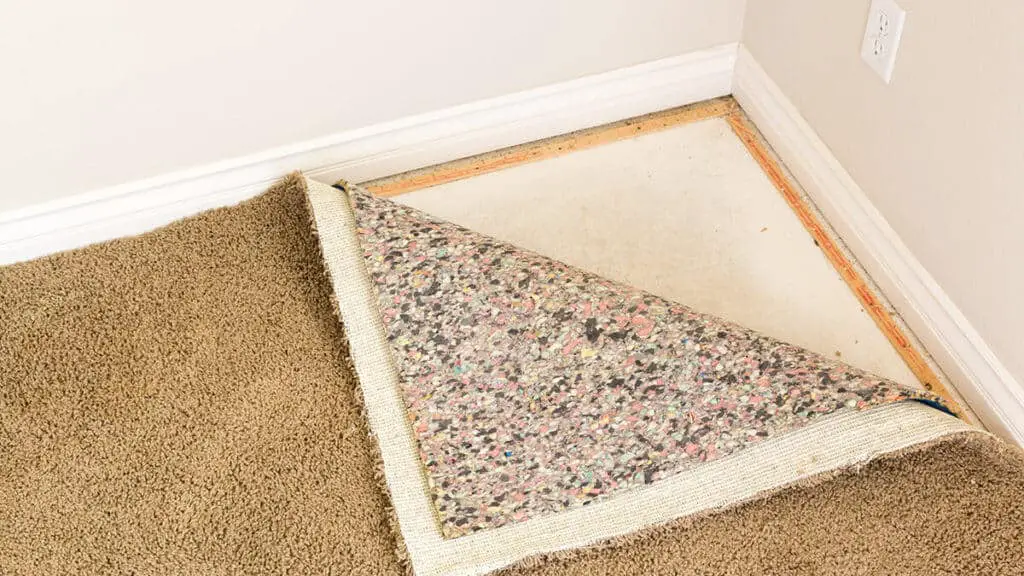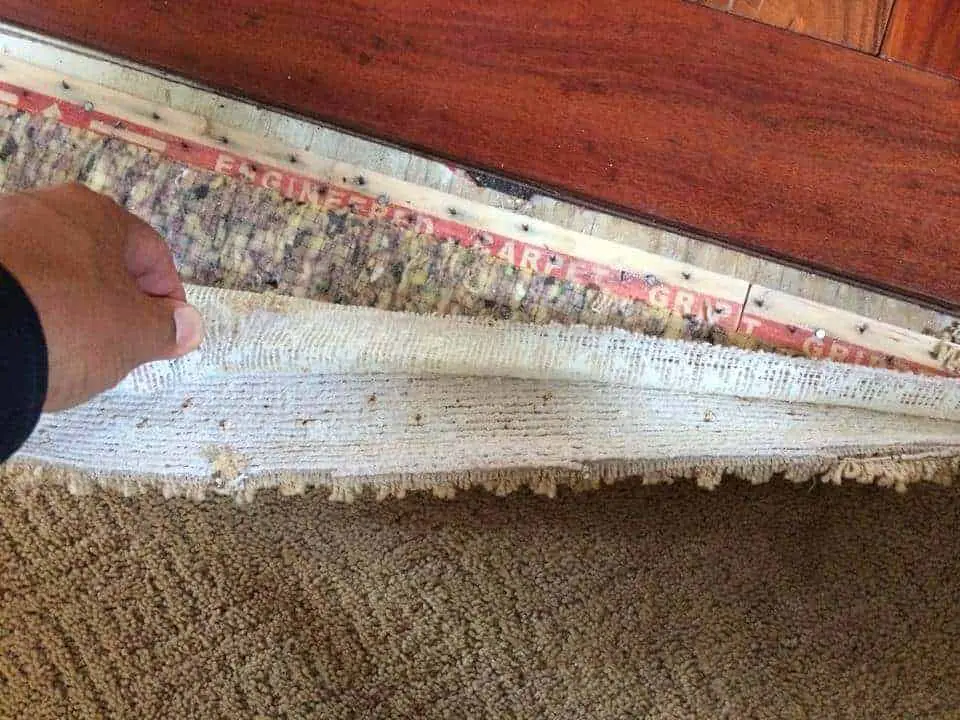There are different events that can get your carpet padding wet, from harmless but frequent liquid spills causing moisture buildup in the padding to a busted water pipe, overflowing sink or tub, and worst of all, a flooded house.
In most cases, the carpet itself might be dry while the padding is wet due to moisture buildup, this causes the wetness to go on unnoticed, and it could lead to even bigger issues like mold and mildew buildup, smell, and even carpet discoloration.
To dry wet carpet padding, increase ventilation in your home or vacuum the wet padding. You can also hot dry with a fan or dryer. Let’s look into more details on how to dry wet carpet padding.
How to Dry Wet Carpet Padding
Table of Contents
Carpet padding is usually a foam underlayment that is specially designed for installation underneath carpets. It serves a number of uses such as insulation, acoustics, support, and comfort. Most carpet padding consists of polyurethane foam, the same material found in furniture, mattresses, and even car seats.
Most people actually recommend getting rid of the carpet padding when it gets wet because it is made out of a foam-like material that acts like a sponge; this allows it to absorb a lot of water easily, and even after drying it out, it might still be damp and start to mildew, produce mold as well as smell under your carpeting.
If your carpet padding has been wet for more than 24 hours, there’s a really good chance your padding is already infected with mold and mildew, and it won’t be advisable to try and save it.
However, if your carpet padding is still in the safe time zone and can be remedied, then you have to keep in mind that although the drying process isn’t that complicated or requires special tools, you will need to give it enough time for it to dry completely.
Read: Best Rug Pad For Hardwood Floors
Increase Ventilation
You will need some protective clothing like a pair of safety glasses and some rubber or work gloves. After suiting up, turn on the air conditioner to help increase ventilation and eliminate moisture from the air and carpet padding.
Separate Carpet from padding
Locate the wet area of the carpet padding and remove the carpet from that area; you will need a pair of pliers or carpet pullers to enable you to grip the carpet close to the baseboard of the wall and separate it from the padding.
You might hear some stripping sounds but do not be alarmed, tack strips are sometimes used to lay carpet smoothly on the padding, so it doesn’t develop creases. If tack strips were used to hold your carpet, you would need needle-nose pliers to grip the staples tightly and rip them out of the carpet.
Vacuum the Padding
Remove the padding from the carpet and fold it; depending on the cause of wetness on your carpet padding, you may need to also dry the carpet as well. Using a shop vac, which is basically a wet/dry vacuum, suck as much water as you possibly can from the padding.
Dry with Towel
If you can’t get any more water from the carpet padding with the vacuum, it’s time to dry it with a towel. Place some absorbent towels over the wet area and walk over them; this pushes the water out into the towel; keep doing this until the towel doesn’t get wet when you walk over it.
When using the vacuum, you want to make sure that you keep all electrical cords away from the water or wet padding.
Hot Dry with Fan or Dryer
Place a fan and/or box heater in the room to blow warm air across the wet area. Placing a heater in the room will help to facilitate the drying of the area. This is because warm air can hold more water than cold air, so with more warm air moving across the carpet.
It will help to draw water out of the carpet faster. However, you want to be careful when using a heater, so you don’t start a fire! If you have a dehumidifier, place it in a position so that the dry air coming out of the dehumidifier is blown across the wet carpet padding by the fan.
If the room has a ceiling fan, switch it on to it’s highest setting. You should also open up leading windows and doors in order to allow ventilation as the padding will be dried faster.
Sprinkle Baking Soda
Once the carpet padding becomes dry to the touch, sprinkle some baking soda all over, this will help to absorb odors and moisture. After letting the baking soda sit for some hours, vacuum it up then spray the padding and bottom of the carpet with spray disinfectant. Replace or remove the carpet over the padding.
While it might be easier to just throw on your carpet back on top of the padding once it dries, it is best if you find the cause of wetness and fix it if possible. This will ensure that there won’t be any repetition of the same problem.
Related: How to get wrinkles out of carpet without a carpet stretcher
Conclusion
If you happen to get your carpet wet, chances are the padding is wet too, and will most people recommend replacing it.
If the padding hasn’t been wet for too long, it can be remedied, and you don’t have to go through the struggle of replacing a carpet padding, so here’s how to dry wet carpet padding; this process is the simplest you can find, while still giving you a dried carpet padding.

